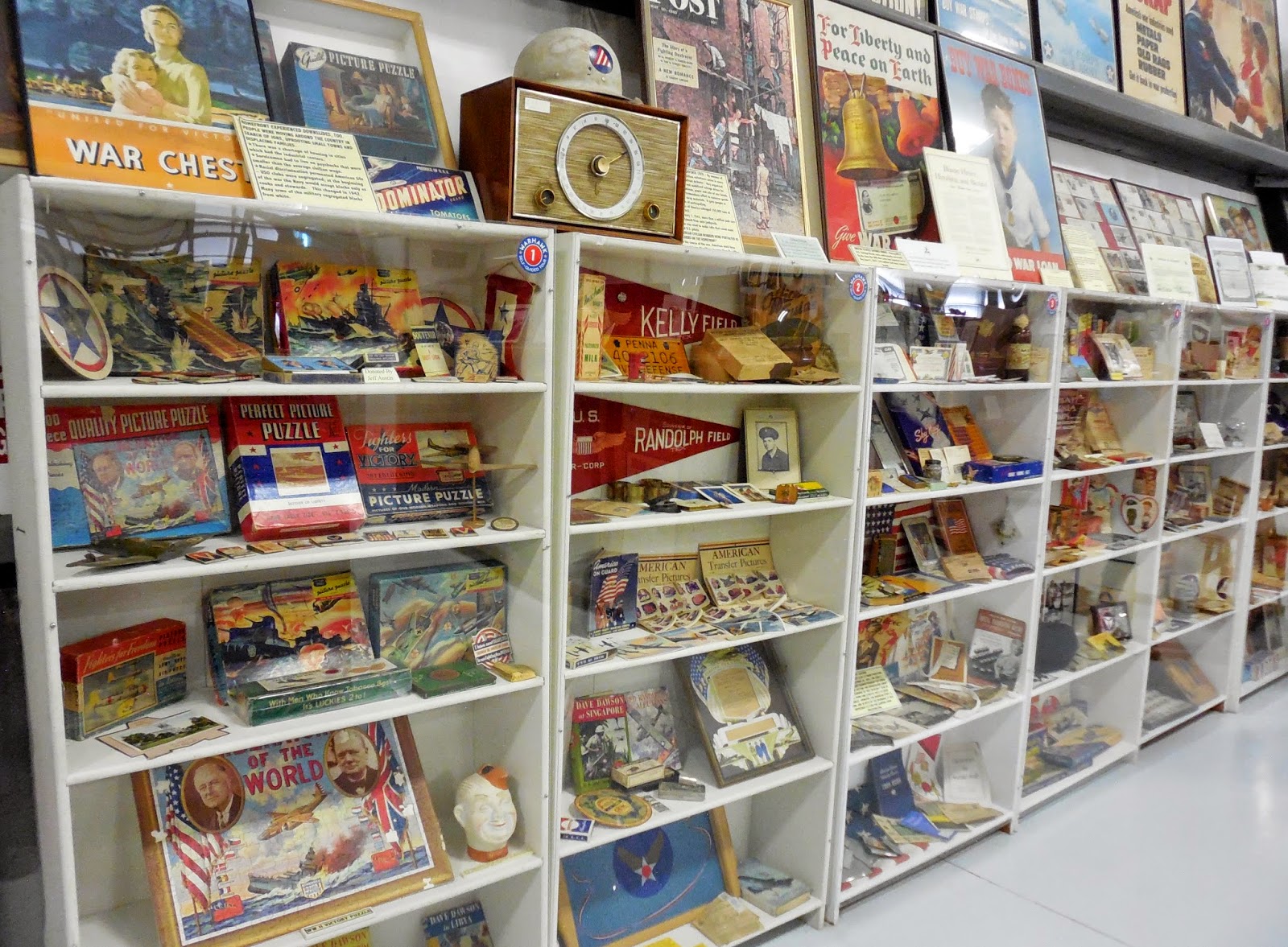
We got a double-bonus when we went to
Hagerman Fossil Beds National Monument. We ended up visiting two more famous historical sites, with no effort (or planning!) on my part.
When I originally started looking at national park sites in southern Idaho, I discovered
Minidoka National Historical Site northeast of Twin Falls. When I read there's no visitor center, and not much of anything there anymore, I crossed it off the itinerary. Imagine my surprise when I saw this sign at the Hagerman Fossil Beds Visitor Center:
It's just a little room behind the Visitor Center Desk with rotating displays that try to tell the story of the Minidoka War Relocation Center, one of ten internment centers where over 100,000 Japanese-Americans were confined during WWII. It's a small exhibit, so there's just a bit of information about the race prejudice and fear hysteria that caused these poor people to be uprooted from their homes and shipped to isolated locations.
The thousand origami crane mobile was created by 8th graders from Buhl, ID.
Ranger Kary told us that a Visitor Center is planned to be opened at the old internment camp, possibly within a few years. That would make it a lot more interesting than this little exhibit at Hagerman.
Back out in the main room of the Visitor Center, I started checking out the fossils. No dinosaurs, but animals like saber-toothed cats, camels and ground sloths were found in sediment layers of bluffs above the Snake River. The most famous is the Hagerman Horse (Equus Simplicidens), which is actually the Idaho State Fossil. (I knew states had state flowers and birds, but fossils? Who knew!) They found 120 skulls and 20 complete skeletons. Paleontologists say he's "the first true horse, but actually looks more like a zebra". I need a lot more than bones to recognize a horse--or a zebra...
Besides the horse, they also have some mastodon bones. There's a skull (without jaw) and a foot. (I did okay identifying this as a mastodon though, although if you'd told me it was an elephant, I could have agreed to that too.)
The mastodon foot is even bigger than George's size 15!
Good thing they have fossils in the Visitor Center, because, as we've come to expect, you can't see them anywhere else. In this park, you can't get anywhere near the fossil beds. However, Kary, our favorite ranger, gave us a self-guided tour map and explained what to look for at the various stops, including how to identify the tracks we'd see. We stopped first at the rest area adjacent to the Hagerman Wildlife Management Area for lunch. It was Stop #2 on the map--the Visitor Center was #1.
Just past the rest area, there are huge boulders on both sides of the road. They're called "melon gravels" and are chunks of basalt tumbled and left behind by the Bonneville Flood. Bet the farmers love 'em!
Stop #3 - We stopped at the historic Owsley Bridge, a one-lane suspended span metal bridge built in 1920. It's on the National Historic Landmark list--you can still drive across it. Slowly.
Stop #4 is the Snake River Overlook. They used melon gravel as parking barriers. Clever use of geological phenomenon. And I bet the farmers don't mind.
The fossil beds are somewhere across the river in those bluffs.
Remember in the first paragraph, I said there were three famous historical sites? The last one isn't the bridge--it's the Oregon Trail! Segments of the old trail parallels the road we're driving, and sometimes you can still see the ruts. (I enlarged the picture enough that you really can see the ruts.)
Directly across the road from the Overlook is the trailhead for the Emigrant Trail, which ran parallel to the Oregon Trail. Apparently the original trail went up some pretty steep places, so some emigrants took another route through here. This is confusing to me because the pioneers called the road they traveled the "Emigrant Trail". Now everyone refers to it as the "Oregon Trail", so when there's an Emigrant Trail next to the Oregon Trail, I have trouble figuring it out. (The trail is two parallel lines down at the bottom of the picture--ignore all those roads and trails up on the hill--like the power poles, they're NOT from the 19th century.)
Stop #5 is the Oregon Trail Overlook. You can see the ruts really clearly here, especially where they came up to the top of the ridge. Those old oxen tore up the land as much as an ATV does!
After that, we headed back to Twin Falls on the Thousand Springs Scenic Byway, along the Snake River. There are a lot of springs across the river, although maybe not 1,000.
Dark clouds were moving our direction fast from the south, and we were hoping we'd get back to the campground before the storm broke. It beat us, then retreated. This is what we found when we arrived--the white stuff is nickel-size hail. Our site was dry, many of the others weren't so lucky.
A few weeks before we got here, there had been days of rain, and part of the upper road and a retaining wall above Rock Creek had collapsed. We really didn't want to get stuck down in the gully and not be able to get out. Everything was fine, just soggy.
 George’s cousin Ernie told us about the Warhawk Air Museum
in Nampa, Idaho. It’s in a big hanger at
the Nampa Municipal Airport.
George’s cousin Ernie told us about the Warhawk Air Museum
in Nampa, Idaho. It’s in a big hanger at
the Nampa Municipal Airport.
.JPG)



.JPG)










.JPG)
.JPG)


.JPG)

.JPG)















.JPG)



.JPG)
.JPG)

.JPG)










.JPG)





.JPG)

